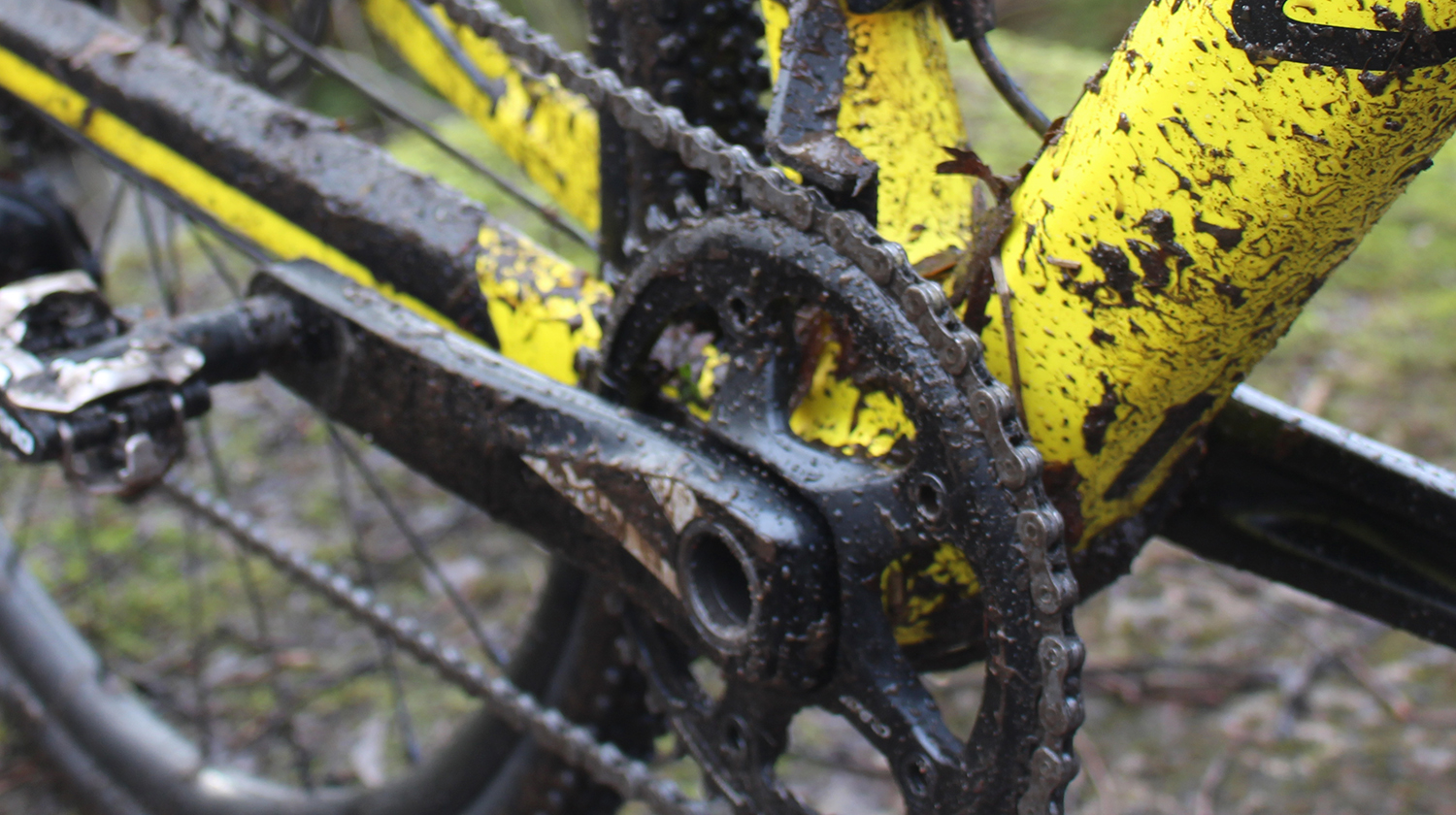The Challenges of Drive Chain Performance Part 1 – The Challenges & Common Misconceptions


The modern chain drive is an area of the bike which hasn’t changed much in hundreds of years. Gearing, materials and components have all developed significantly with bike designs and engineering advances, but the problem of premature chain and component wear still exists as manufacturers struggle to deal with the harsh environment in which the chain has to operate.
Cyclists know that metal on metal needs lubrication to prevent it from wearing, just look at car engines, which can now run for tens of thousands of miles with the development of modern engine oils. A car engine however is sealed from the outside world which allows it to achieve such amazing durability. For years cyclists have simply added oil to chains hoping it will last, but it needs to be continually reapplied and the whole system cleaned in order for it not to build up into a horrible grinding paste.
In recent years chain lubrication and performance has become an important topic, with high profile teams championing the theory of marginal gains and many chain lubrication manufacturers striving to create the world’s fastest chains…. however does fastest necessarily mean most efficient and effective across a wide range of factors!
Chain drives remain the most popular choice of final drive on modern bicycles, primarily due to the fact that they are still the most efficient and reliable form of power transfer. There are alternatives like belt drives, but the ever evolving and innovative designs rolled out by leading manufacturers like Shimano and SRAM, the use of high grade materials and the depth of research and testing they go to in order to improve the reliability of their products continues to keep the chain final drive as an OE fit on almost all modern bicycles.
Without question most cyclists will have experienced one or more of the problems with drivetrain performance at some time or other. A noisy grinding transmission, missed gear shifts, chain suck, ghost shifting, jumping chains, squeaky chains, chain failure, prematurely worn components and a build-up of a dirty black grinding paste over the entire drivetrain. This is also coupled with the hassle of having to deal with these through the time consuming and laborious process of cleaning, degreasing and re-lubing, not to mention the cost of replacement parts. Few, however are aware of the performance implications these issues also present.
For the mechanically sympathetic, the slick sound of a perfectly clean and lubricated transmission whirring away can be a joy to behold, although due to the impact of the external environmental, this rarely lasts for a number of reasons.
Firstly, dirt. Dirt comes in lots of different forms. Coarse, fine, wet, dry, dusty, powdery, abrasive and the dreaded sticky, claggy dirt!
As well as the ever present dirt in the environment there are a host of other environmental factors that can influence chain performance including the weather, humidity and temperature. In addition to this other variables that will also influence chain performance include power, torque, gear selection, cross-chaining and rider input variances, not to mention quality of components which can vary significantly from manufacturer to manufacturer, even within the same manufacturer batches.
The final drive has to deal with all of these. When setup in the perfect environment of a lab and when perfectly lubricated it can achieve 97-98% efficiency, but as soon as it is introduced to the real world this level of performance is seldom maintained.
Considering chain efficiency in percentage terms allows you to understand that the impact of chain performance is greater the higher the rider input. No chains are ever 100% efficient and they will all experience losses – for most chains this sits in the region of 5-6watts of baseline losses when the rider input is at 250 watts or 98% efficiency. The natural losses of 2% are greater in real power terms the higher the rider input:
| Rider Input | 2% Loss |
| 125 Watts | 2.5 Watts |
| 250 Watts | 5 Watts |
| 500 Watts | 10 Watts |
| 1000 Watts | 20 Watts |
In the real world when chains are not properly lubricated they transfer significantly less power from the pedals to the wheel. This can equate to up to 10% of a rider’s effort!
The challenge of keeping the transmission in optimum working condition is something that is felt by everyone, be they professional cyclists or amateurs alike. From our experiences in working with the pro-team Orica-Scott we have seen mechanics applying chain lube to the bikes transmissions from the back of the car during stages of grand tour races, we have seen chains and cassettes encrusted with dirt picked up from the road even before the race begins and we have tested the performance of chains before and after a race which have seen losses that have grown to 20 watts after just one ride!
An Orica-Bike Exchange mechanic re-applying chain lube during a race as the traditional chain lube has worn off even on a clear dry day
What all this tells us is that traditional lubrication methods can often struggle to deal with their use environment and fall short of meeting the needs of all cyclists. Considering that for the pros their bikes are always prepared by their mechanics to be in the best condition at the start of a race, whereas few amateur cyclists have a mechanic to clean and maintain their bike after each ride. If the pro’s are struggling to keep their bikes working at their best with traditional methods it’s reasonable to assume that these approaches are not performing for everyday cyclists as well.